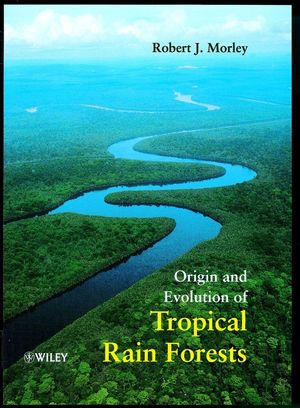Origin and Evolution of Tropical Rain ForestsISBN: 978-0-471-98326-2
Hardcover
384 pages
April 2000
 This is a Print-on-Demand title. It will be printed specifically to fill your order. Please allow an additional 10-15 days delivery time. The book is not returnable.
|
||||||
Provides the first comprehensive review of the evolution of
tropical rain forests on a continent by continent basis, within an
up-to-date tectonic, palaeogeographical and palaeoclimatic
framework primarily by reference to the record of fossil pollens
and spores.
Although tropical rain forests form the world's most species-rich ecosystems, their origin and history remain unclear, except on the very short timescale of the last 40,000 years or so. This book looks at their history on a long term geological and global timescale, commencing with the origin of the angiosperms over 100 million years ago which today overwhelmingly dominate the forests. It also establishes the age of the great tropical rain forest blocks and identifies the world s oldest tropical rain forests. Finally, it compares 20th Century tropical rain forest destruction with prehistoric forest clearance in temperate regions, and looks for analogues of the present phase of destruction within the geological record before considering long term implications of total rain forest destruction.
The book draws on previously unpublished palynological data generated for petroleum companies during the course of hydrocarbon exploration programmes.
It will be of interest to all concerned with tropical rain forests, especially biologists, botanists, ecologists, and students of evolution. It will be invaluable for postgraduates, and advanced undergraduates, as well as stratigraphers, palaeobotainists, palynologists, and petroleum geologists.
Although tropical rain forests form the world's most species-rich ecosystems, their origin and history remain unclear, except on the very short timescale of the last 40,000 years or so. This book looks at their history on a long term geological and global timescale, commencing with the origin of the angiosperms over 100 million years ago which today overwhelmingly dominate the forests. It also establishes the age of the great tropical rain forest blocks and identifies the world s oldest tropical rain forests. Finally, it compares 20th Century tropical rain forest destruction with prehistoric forest clearance in temperate regions, and looks for analogues of the present phase of destruction within the geological record before considering long term implications of total rain forest destruction.
The book draws on previously unpublished palynological data generated for petroleum companies during the course of hydrocarbon exploration programmes.
It will be of interest to all concerned with tropical rain forests, especially biologists, botanists, ecologists, and students of evolution. It will be invaluable for postgraduates, and advanced undergraduates, as well as stratigraphers, palaeobotainists, palynologists, and petroleum geologists.



